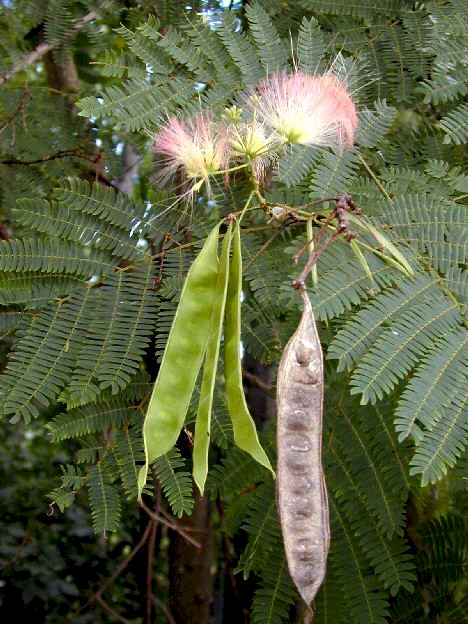| Albizia julibrissin | |
|
Mimosa
|
|
| Origin Of Species | |
| China | |
| Physical Description | |
Mimosa is a small tree that can grow between ten and forty feet in height. The twice-compound characteristic fern-like leaves alternate along the stems and possess many leaflets. The pink and white flowers of the mimosa tree are flashy and fragrant, growing about four inches in width, and terminally located at the ends of branches. The fruits are flat green pods about six inches long that are ripe in August and September, but remain on the trees well into winter, turning a dull brown color. |
|
| Habitat And Distribution | |
| Mimosa trees prefer ample sunlight and are thus found along woodland borders, thickets, roadsides, near parking lots, and in open areas and lots in urban and suburban locations. It is predominant within the eastern, southeastern, and southern edges of the United States. | |
| Location On Campus | |
| Mimosa trees are found at scattered locations along woodland edges, especially along the border of the commuter parking lot behind Gottwald Science Center and the intramural fields. | |
| Negative Impacts | |
| Mimosa tress are aggressive invaders and often out-compete native trees and shrubs in open areas or forest edges because of their ability to grow in a myriad of soil types, produce extremely large seed crops, and redevelop when damaged. Often, cultivated ornamentals spread their seeds into nearby damaged areas. Mimosa trees often grow in dense clusters, limiting the sunlight and nutrients available for other plants. | |
| VDCR Invasiveness Ranking | |
| Occasionally Invasive Species Additional Images: Fruit with leaves Tree |
|
